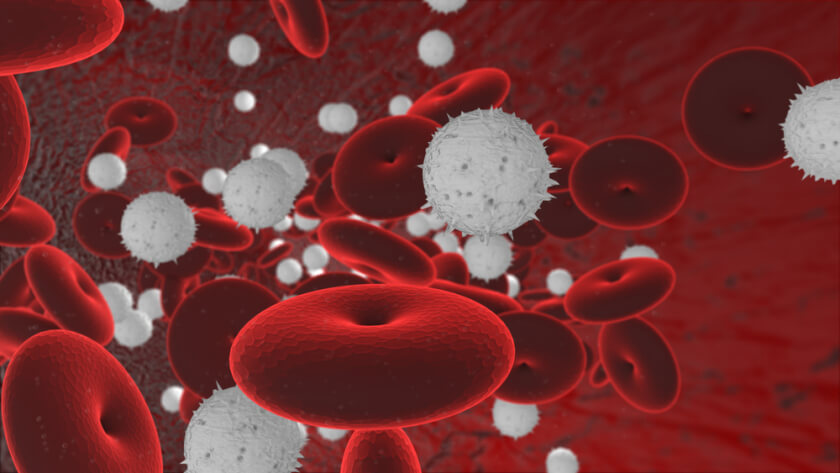Over the years, platelet-rich plasma therapy has increased in popularity as one of the most promising and effective hair loss treatments. PRP injections are unique because they use a potent solution made from a patient’s blood sample. In creating the PRP serum, there are different methods of preparation that can separate the platelets from other blood components.
So are there white blood cells in PRP injections for hair loss? When blood is spun at a slower speed than normal, it can leave behind a considerable amount of leukocyte count and stem cells along with the concentrations of platelets. Some laboratory studies suggest that PRP injections with white blood cells have increased healing and hair restoration potential due to the high amount of platelet-rich growth factors in the serum.
Are There White Blood Cells In A PRP Injection?
Male and female patients with hair loss and androgenic alopecia can benefit from the healing and regenerative abilities of platelet-rich plasma injections. As an autologous treatment, it harnesses the power of the blood platelets and its numerous growth factors to promote new cell growth and stimulate the dormant hair follicles to grow healthy hair.
When making PRP injections for hair loss, providers can use different techniques and practices to get the optimal concentration of platelets. The types of PRP injection can be classified according to their fibrin architecture and leukocyte concentration. Here are the four main categories of PRP autologous preparation:
- Pure PRP or leukocyte-poor plasma injections: This is one of the most common PRP products used for skin and hair rejuvenation as well as for the treatment of sports injuries and chronic tendon injuries. These are serum preparations without leukocytes and red blood cells and a low-density fibrin network.
- Leukocyte and platelet-rich plasma injection (L-PRP): This type of PRP product has white blood cells content but they maintain a low-density fibrin network after the platelet activation process.
- Pure platelet-rich fibrin (P-PRF): This mode of preparation contains a high-density fibrin network but they don’t have any white blood cells.
- Leukocyte and platelet-rich fibrin (L-PRF): These second-generation platelet products are preparations with leukocyte and high-density fibrin networks. This method of preparation is done by spinning blood at a lower speed to yield a high platelet count while allowing white blood cells to remain in the final product. Its difference from pure PRP is that it stimulates a slow release of growth factors and platelets in the injection site.
What’s The Role of White Blood Cells In PRP?

In general, white blood cells or leukocytes are one of the essential cellular components of blood that are necessary for protecting the body against infections and other external threats. There are various types of leukocytes and each of them has its own functions when included in PRP injections.
1) Neutrophil
The most common form of white blood cells is the neutrophil. They mainly act as the immune system’s first line of defense when a foreign substance has entered the body. However, clinical studies show that the presence of neutrophils is not necessarily recommended in PRP. They might have a negative action in the healing of injuries since they have been shown to release pro-inflammatory cytokines that can aggravate tissue damage.
2) Monocytes
This white blood cell type supports the immune system in fighting off infections and is helpful in facilitating the tissue repair process and wound healing. In PRP treatment protocols, monocytes can help in cellular activities and stimulate collagen production in the fibroblasts. Having a good amount of monocytes in PRP injections can be beneficial in hair regrowth.
3) Eosinophils
These white blood cells are important in defending the body against parasitic and viral infections as well as regulating allergic reactions. They are known to release a number of growth factors that can support the natural healing process, cell proliferation, and induction of angiogenesis of PRP injections. Their inclusion in the final PRP product can provide favorable results for the repair of damaged tissues.
4) Lymphocytes
Lymphocytes are an important part of the immune system that attacks infected cells and provides a defensive action against bacteria and viruses. While the growth factors in the platelets can activate the lymphocytes as a part of the healing process of PRP, there’s no clear evidence of whether they are beneficial for hair growth or the treatment of muscle injuries.
5) Basophils
Like most white blood cells, basophils play an essential role in helping identify and destroy cancer cells as well as mediating allergic reactions and asthma attacks. Active basophils are known to release cytokines that may cause inflammation but similar to lymphocytes, it’s still unclear whether they have positive effects when included in the concentrated plasma solution of PRP.
What Other Components in PRP Treatments Help With Hair Regrowth?
When it comes to hair restoration, platelet-rich fibrin injections may be more effective than traditional PRP because of their white blood cell content. Experts say that PRF products have a platelet concentration that is 10 times the normal amount in whole blood. This means that it can increase growth factor release to promote healthier hair growth.
Some of the essential growth factors that can be found in PRF or PRP hair treatments are:
1) Platelet-derived growth factor (PDGF)
In hair growth treatments, PDGF can help form new blood vessels and stimulate cell growth to regenerate the hair follicles. They also have positive action in prolonging the anagen phase of the hair growth cycle so it could reverse hair loss and trigger natural hair production.
2) Vascular endothelial growth factor (VEGF)
The main function of vascular endothelial growth factors is to promote stem cell migration and perifollicular angiogenesis which can help improve the delivery of nutrients, oxygen, and blood supply to the scalp and follicles.
They can also help enhance cell survival and stimulate the mitogenesis of endothelial cells to increase the thickness of the hair shaft and maintain follicle health.
3) Epidermal growth factor (EGF)
Epidermal growth factors play an important role in the hair cycle which can help signal the hair follicle to start the growth phase. They are known to stimulate the proliferation of epithelial cells and fibroblasts and support collagen production.
4) Fibroblast growth factor (FGF)
Fibroblast growth factors help increase the efficacy of concentrated platelet solutions in hair restoration treatments. They can directly influence the hair growth cycle and trigger the anagen transition of the hair follicles.
By doing so, the follicles can continue their activity of producing new anagen hairs and increase hair counts on the scalp. It can also improve terminal hair density and reduce the amount of shedding that patients may experience.
What To Expect During and After PRP Hair Treatments

Anyone who’s suffering from androgenetic alopecia and other types of hair loss can benefit from PRP treatments. However, you should expect to get more than one session to achieve desired hair growth results. Most patients start their initial treatment with 3 sessions followed by periodic maintenance treatments to sustain the effects of PRP.
Since you’re likely to get multiple treatments, it’s important to prepare yourself and know what the typical PRP procedure involves. Here’s what you need to expect during and after PRP hair loss therapy:
- The procedure will require a quick blood draw to prepare the PRP solution. The amount of blood sample typically varies depending on the area being treated but it shouldn’t exceed more than 60mL of blood.
- After blood extraction, the provider will place it in the centrifuge machine to separate the liquid portion with concentrated platelets from the red and white blood cells. If needed, they may modify the preparation method by spinning it at a lower velocity to get an adequate amount of leukocytes in the final product.
- Once the PRP serum is ready, they will prepare the scalp and apply a topical anesthetic to manage the discomfort from the injections. They will release the concentration of growth factors to the areas with hair loss.
- After injections, patients can return to their normal activities without needing any downtime. Since PRP is a natural treatment, there are no major side effects but you may experience some scalp pain, swelling, and tenderness for the first few days.
Get High-Quality Supplies for Hair Loss Treatments at FACE Med Store
The presence of white blood cells in a PRP injection can be more effective in improving follicle health and promoting thicker hair growth than pure platelets. However, for patients who are not too keen on the process of bloodwork and needles, they may consider PEP Factor an alternative treatment for hair and scalp rejuvenation.
PEP Factor is a topical treatment that contains a rich blend of fibroblast growth factors and copper peptides that can help enhance scalp and hair health. At FACE Med Store, we offer quality PEP Factor solutions as well as other medical tools and supplies for hair loss treatments. Call us today to know more about the product or inquire about our stocks.






